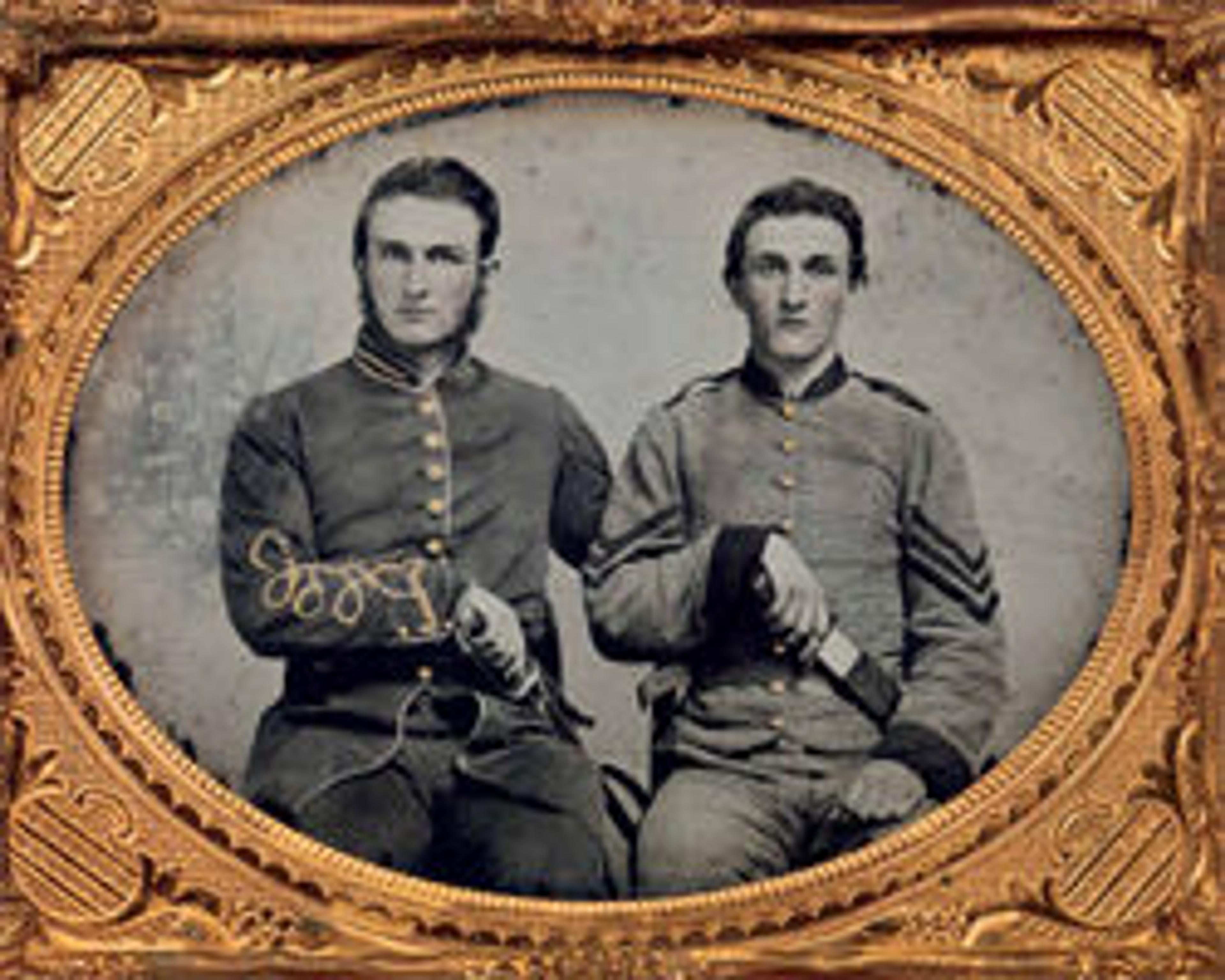Scene of General McPherson's Death
George N. Barnard released this volume of views in November 1866, ten months after Alexander Gardner published his Sketch Book. Together, the two volumes are the foundational publications of nineteenth-century American photography. One is an amalgamation of photographs by multiple artists made over a period of four years; the other is the work of a single artist who followed the campaign of one general and his army in the final months of the war.
On July 22, 1864, Union General James Birdseye McPherson was shot off his mount near the woods seen here. First in his West Point class of 1853 and keenly admired and trusted by General Sherman, McPherson was the only commander of a federal army during the Civil War to die in battle. Barnard constructed the photograph as a painter might, by manipulating the bones, trimming the foliage, and removing any distracting details that could interfere with the psychological meaning of a proper memorial portrait. The screen of trees became a simple but useful backdrop, a curtain for this minimal landscape of life and death.
On July 22, 1864, Union General James Birdseye McPherson was shot off his mount near the woods seen here. First in his West Point class of 1853 and keenly admired and trusted by General Sherman, McPherson was the only commander of a federal army during the Civil War to die in battle. Barnard constructed the photograph as a painter might, by manipulating the bones, trimming the foliage, and removing any distracting details that could interfere with the psychological meaning of a proper memorial portrait. The screen of trees became a simple but useful backdrop, a curtain for this minimal landscape of life and death.
Artwork Details
- Title:Scene of General McPherson's Death
- Artist:George N. Barnard (American, 1819–1902)
- Date:1864 or 1866
- Medium:Albumen silver print from glass negative
- Dimensions:Image: 25.4 × 36.1 cm (10 × 14 3/16 in.)
- Classification:Photographs
- Credit Line:Pfeiffer and Rogers Funds, 1970
- Object Number:1970.525 (35)
- Curatorial Department: Photographs
More Artwork
Research Resources
The Met provides unparalleled resources for research and welcomes an international community of students and scholars. The Met's Open Access API is where creators and researchers can connect to the The Met collection. Open Access data and public domain images are available for unrestricted commercial and noncommercial use without permission or fee.
To request images under copyright and other restrictions, please use this Image Request form.
Feedback
We continue to research and examine historical and cultural context for objects in The Met collection. If you have comments or questions about this object record, please contact us using the form below. The Museum looks forward to receiving your comments.
